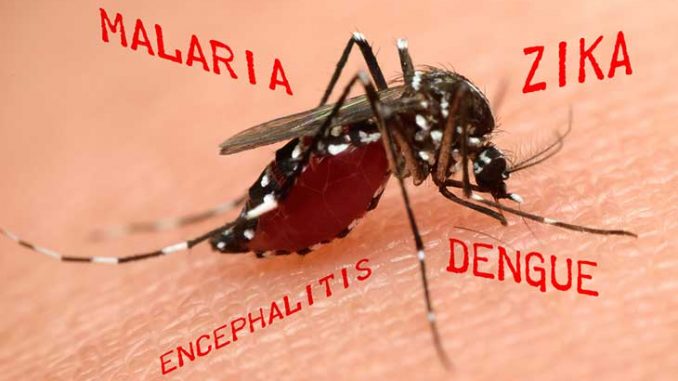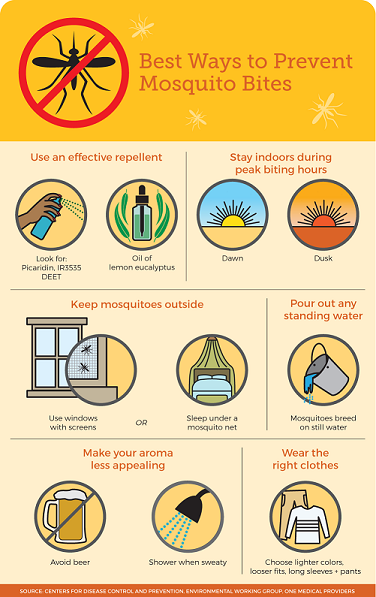
- Mosquitoes spread or transmit the worst diseases in people.
- Diseases like encephalitis, filarial, dengue, malaria, yellow fever are transmitted by mosquito bites.
| S.N. | Diseases | Mosquito type | Causative agent |
| 1. | Malaria | Anopheles species | Plasmodium species |
| 2. | Filarial/Filariasis/Elephantiasis | Culex species | Wuchereria bancrofti (a parasitic nemathelminth) |
| 3. | Dengue fever | Culex species and Aedes species | Dngue Virus |
| 4. | Japanese encephalitis | Culex specices and Aedes species | Japanese encephalitis Virus |
| 5. | Yellow fever | Aedes species | Flavi Virus |
| 6. | Zika | Aedes aegypti | Zika Virus |
Transmission of malaria:
- Malaria is a dangerous parasitic disease common in Terai region of Nepal.
- It is caused by a protozoan, Plasmodium and is transmitted by the bite of a female Anopheles mosquito.
- These protozoans spend part of their life in human bodies and some part in Anopheles bodies.
- The malarial parasites enter the body of the female Anopheles when it sucks blood from a malarial patient.
- These parasites live and grow behind the stomach wall in mosquito’s body.
- When fully developed, they migrate upwards into the salivary glands of mosquitoes.
- At this time, if the female Anopheles mosquito harboring Plasmodium in its salivary glands bites a person, then along with its saliva it injects the parasites in to human body.
See in detail (Life cycle of Plasmodium in Anopheles mosquito and humans)
https://onlinesciencenotes.com/sexual-cycle-or-sporogony-in-the-life-cycle-of-plasmodium/
https://onlinesciencenotes.com/asexual-cycle-or-schizogony-in-the-life-cycle-of-plasmodium/
- In our body, these parasites immediately enter into the liver through the blood and escape blood tests for the next 3 days.
- These parasites live for about two weeks in liver cells and continuously grow by destroying them.
- After their release from liver cells, they enter into blood cells (RBCs).
- Inside the RBCs, they become round in form and start growing by toxifying and killing our RBCs.
- The infected RBCs burst and release the parasites into the blood stream which will again enter into fresh RBCS and liver cells and start destroying them.
- With the rupture of RBCs, the patient suffers an attack of malaria; fever due to the release of toxins by the parasites, anemia etc.
Prevention and control of infection:

- A good knowledge of life cycle of mosquito helps to take adequate precautions and control measures in the early stage of their life cycle. Following methods are used for the prevention and control of mosquitoes and diseases they transmit.
- Personal protection:
- In areas infected with mosquitoes, protective clothing may be used such as cover the exposed parts of our body, i.e. full sleeved clothes.
- Mosquito repellants keeps the mosquitoes away, i.e. application of mosquito repellant creams like Odomos on our exposed skin.
- Doors and windows should be screened with mosquito proof gauze or nets.
- Mosquito nets should be used in beds.
- Destruction of adults:
- Adults can be destroyed by spraying liquid insecticides.
- Adults can be physically killed by hands or by using electric racket.
- Fumigation of rooms and surrounding with pyrethrum, sulphur dioxide and camphor are also effective in killing or driving the mosquitoes away.
- Destruction of larvae and pupae:
- It is easier and most effective to kill mosquitoes in their larval and pupal stages.
- There are two methods to kill larvae and pupae;
- Chemical method
- Biological method
- Chemical method: The breeding places such as drains, ditches, puddles, swamps, small ponds should be treated with petroleum oil, paraffin oil or kerosene oil. These substances form a layer on the water surface, so that the larvae and pupae die due to suffocation, as their respiratory siphon is blocked and hence can’t breathe.
- Biological method: Fish like Gambusia, Guppy and even trouts feed on the mosquito larvae and pupae. Hence, incorporation of these fish in stagnant water with larvae and pupae of mosquito help in getting rid of them.
- Elimination of breeding places:
- Mosquitoes lay eggs in stagnant water in puddles, ditches, swamps etc.
- The larvae and pupae develop in water; therefore elimination of breeding places is of primary importance.
- Swampy and marshy areas with stagnant water should be drained out.
- Water should not be allowed to stand or get collected in lanes and streets.
- If possible, the breeding grounds should be filled up with soil or small stones or pebbles so that no water gets collected.
- The bushes and shrubs around marshy areas should be destroyed so that mosquitoes don’t find any place to hide during the daytime.
- Personal protection: